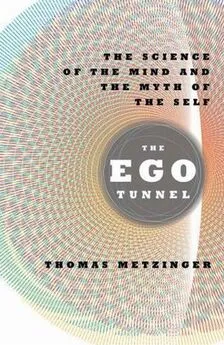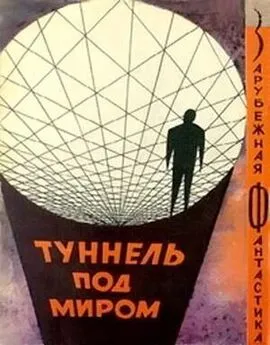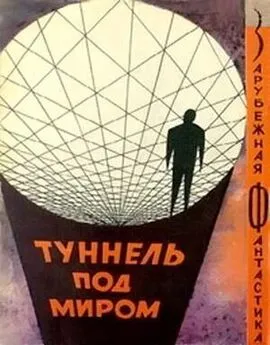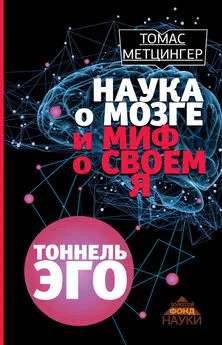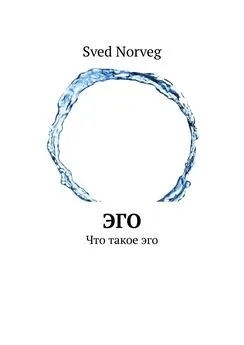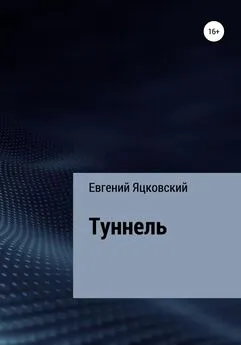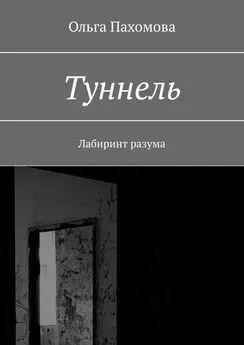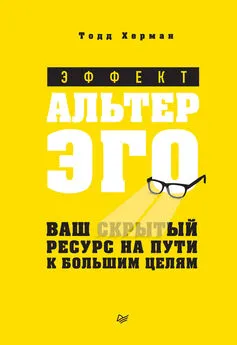Томас Метцингер - Туннель Эго
- Название:Туннель Эго
- Автор:
- Жанр:
- Издательство:неизвестно
- Год:неизвестен
- ISBN:нет данных
- Рейтинг:
- Избранное:Добавить в избранное
-
Отзывы:
-
Ваша оценка:
Томас Метцингер - Туннель Эго краткое содержание
Томас Метцингер — Туннель Эго
Thomas Metzinger — The Ego Tunnel. The Science Of The Mind and The Myth Of The Self
Перевод с английского: Вячеслав Михайлов v.v.mykhailov@gmail.com
http://www.nwethik.com
Туннель Эго - читать онлайн бесплатно полную версию (весь текст целиком)
Интервал:
Закладка:
18. E. Waelti, Der dritte Kreis des Wissens (Interlaken: Ansata, 1983), 18, 25. English translation by T. Metzinger.
19. C. S. Alvarado, «Out-of-Body Experiences,» in E. Cardena et al., eds., Varieties of Anomalous Experience: Examining the Scientific Evidence (Washington, DC: American Psychological Association, 2000).
20. See, for example, J. Palmer, «A Community Mail Survey of Psychic Experience,» Jour. Am. Soc. Psychical Res. 73:21–51 (1979); S. Blackmore, «A Postal Survey of OBEs and Other Experiences,» Jour. Soc. Psychical Res. 52:225–244 (1984).
21. See Alvarado, «Out-of-Body Experiences» (2000) for an overview of many studies; Blackmore, «Spontaneous and Deliberate OBEs: A Questionnaire Survey,» Jour. Soc. Psychical Res. 53:218–224 (1986); Harvey J. Irwin, Flight of Mind (Metuchen, NJ: Scarecrow Press, 1985), 174 ff; O. Blanke & C. Mohr, «Out-of-Body Experience, Heautoscopy, and Autoscopic Hallucination of Neurological Origin: Implications for Neurocognitive Mechanisms of Corporeal Awareness and Self Consciousness,» Brain Res. Rev. 50:184–199 (2005).
22. O. Devinsky et al., «Autoscopic Phenomena with Seizures,» Arch. Neurol. 46:1080-8 (1989).
23. See, for example, P. Brugger, «Reflective Mirrors: Perspective-Taking in Autoscopic Phenomena,» Cog. Neuropsychiatry 7:179–194 (2002); Brugger et al., «Unilaterally Felt Presences: The Neuropsychiatry of One Invisible Doppelganger,» Neuropsychiatry, Neuropsychology, and Behavioral Neurology 9:114–122 (1996); Brugger et al., «Illusory Reduplication of One's Own Body: Phenomenology and Classification of Autoscopic Phenomena,» Cog. Neuropsychiatry 2:19–38 (1997); Devinsky et al., «Autoscopic Phenomena» (1989).
24. U. Wolfradt, «AuGerkorpererfahrungen (AKE) aus differentiellpsychologischer Perspektive,» Zeitschriftf. Paraps. u. Grenzgeb. D. Psych. 42/43:65-108 (2000/2001); U. Wolfradt & S. Watzke, «Deliberate Out-ofBody Experiences, Depersonalization, Schizotypal Traits, and Thinking Styles,» Jour. Amer. Soc. Psychical Res. 93:249–257 (1999).
25. H. J. Irwin, «The Disembodied Self: An Empirical Study of Dissociation and the Out-of-Body Experience,» Jour. Parapsych. 64(3):261–277 (2000).
26. See Wolfradt, «AuGerkorpererfahrungen (AKE)» (2000/2001).
27. Ibid. Other studies find only 22–36 percent; see Alvarado, «Out-ofBody Experiences» (2000).
28. Wolfradt, «AuGerkorpererfahrungen» (2000/2001).
29. C. Green, Out-of-the-Body Experiences (London: Hamish Hamilton, 1968).
30. O. Blanke et al., «Stimulating Illusory Own-Body Perceptions,» Nature 419:269–270 (2002).
31. For a more detailed hypothesis concerning the role of the temporoparietal junction, see Blanke et al., «Out-of-Body Experience and Autoscopy of Neurological Origin,» Brain 127:243–258 (2004); S. Bunning & O. Blanke, «The Out-of-Body Experience: Precipitating Factors and Neural Correlates,» Prog. Brain Res. 150:333–353 (2005); O. Blanke & S. Arzy, «The Out-of-Body Experience: Disturbed Self-Processing at the Temporo-Parietal Junction,» The Neuroscientist 11:16–24 (2005); and F. Tong, «Out-of-Body Experiences: From Penfield to Present,» Trends Cog. Sci. 7:104–106 (2003).
32. Blanke et al., «Linking Out-of-Body Experience and Self-Processing to Mental Own-Body Imagery and the Temporoparietal Junction,» Jour. Neurosci. 25:550–557 (2005).
33. For more on this point, see Blanke & Metzinger, «Full-Body Illusions and Minimal Phenomenal Selfhood,» 13(1):7-13 (2009).
34. See Wolfradt, «AuGerkorpererfahrungen (AKE)» (2000/2001), 91.
35. Can you imagine what it would be like to look at yourself from the outside and shake your own hand? Henrik Ehrsson of the Karolinska Institute in Stockholm, Sweden, is one of the leading figures in self-model research. He created one of the classic full-body illusion experiments and also demonstrated that upper limb amputees can be induced to experience a rubber hand as their own and extended the field by focusing on behavioral and neuroimaging evidence. Recently, members of his team managed to not only trigger the illusion that another person's body was one's own, but also create the phenomenal experience of being in that other person's body while actually facing their own body and shaking their own hand. See Valerie I. Petrovka & H. Henrik Ehrsson, «If I Were You: Perceptual Illusion of Body Swapping,» PLoS ONE 3(12):e3832 (2008), H. Henrik Ehrsson, «The Experimental Induction of Out-of-Body Experiences,» Science 3127:1048 (2007), H. Henrik Ehrsson et al., «Upper Limb Amputees Can Be Induced to Experience a Rubber Hand as their Own,» Brain 131:3443–3452; Tamar R. Makin et al., «On the Other Hand: Dummy Hands and Peripersonal Space,» Beh. Brain. Res. 191:1-10 (2008).
36. See W. Barfield et al., «Presence and Performance Within Virtual Environments,» in Woodrow Barfield & Thomas A. Furness III, eds., Virtual Environments and Advanced Interface Design (New York: Oxford University Press, 1995). See also M. V. Sanchez-Vives & M. Slater, «From Presence to Consciousness Through Virtual Reality,» Nat. Rev. Neur. 6.332339 (2005). Mel Slater, for many years a leading researcher in the field of virtual reality, has recently demonstrated that the feeling of ownership can also be induced for simulated body parts in virtual environments (rather than, as in our experiment, having people still look at their «real» body). Obviously, this permits experiments that would never have been possible in the physical world, including real-time modifications of virtual bodies not only in terms of length, size, and appearance, but also complex motion patterns. As the authors put it: «For the future our work also suggests that people can have their 'self' enter the virtual domain in a genuine sense of the word, and not just metaphorically as in current day computer games and online communities. In combination with BCI [brain-computer interfaces] we envisage a functioning virtual body that is felt as their own by participants, with a significant application in VR training, limb prosthetics, and entertainment.» See M. Slater et al., «Towards a Digital Body: Th Virtual Arm Illusion,» Frontiers Hum. Neurosci. 2:6. doi:10.3389/neuro.09.006.2008.
37. See www.dukemednews.org/news/article.php?id=10218.
38. See, for example, R. A. Sherman et al., «Chronic Phantom and Stump Pain Among American Veterans: Results of a Survey,» Pain 18:83–95 (1984).
39. S. W. Mitchell, «Phantom Limbs,» Lippincott's Mag. Pop. Lit. & Sci. 8:563–569 (1871).
40. See V. S. Ramachandran et al., «Scientific Correspondence: Touching the Phantom Limb,» Nature 377:489–490 (1995); V. S. Ramachandran & D. Rogers-Ramachandran, «Synaesthesia in Phantom Limbs Induced with Mirrors,» Proc. Roy. Soc. Lond. B:377–386 (1996); and V. S. Ramachandran & Sandra Blakeslee, Phantoms in the Brain (New York: William Morrow, 1998).
41. V. S. Ramachandran, «Consciousness and Body Image: Lessons from Phantom Limbs, Capgras Syndrome and Pain Asymbolia,» Phil. Trans. Roy. Soc. Lond. B353:1851-9 (1998). For clinical and experimental details, see Ramachandran and Rogers-Ramachandran, «Synaesthesia in Phantom Limbs» (1996).
42. P. Brugger et al., «Beyond Re-membering: Phantom Sensations of Congenitally Absent Limbs,» Proc. Nat. Acad. Sci. USA 97:6167-72 (2000).
43. See § 12 and § 13 of The Ethics.
CHAPTER 4
1. Adapted from the case report of a sixty-eight-year-old woman suffering from stroke-related, transient alien hand syndrome. From D. H. Geschwind et al., «Alien Hand Syndrome: Interhemispheric Disconnection Due to Lesion in the Midbody of the Corpus Callosum,» Neurology 45:802–808 (1995).
2. See K. Goldstein, «Zur Lehre der Motorischen Apraxie,» Jour. fur Psychologie und Neurologie 11:169–187 (1908); W. H. Sweet, «Seeping Intracranial Aneurysm Simulating Neoplasm,» Arch. Neurology & Psychiatry 45:86-104 (1941); S. Brion & C.-P. Jedynak, «Troubles du Transfert Interhemispherique (Callosal Disconnection). A Propos de Trois Observations de Tumeurs du Corps Calleux. Le Signe de la Main Etrangere,» Revue Neurologique 126:257–266 (1972); G. Goldberg et al., «Medial Frontal Cortex Infarction and the Alien Hand Sign,» Arch. Neurology 38:683–686 (1981). For an important new conceptual distinction, see C. Marchetti & S. Della Sala, «Disentangling the Alien and the Anarchic Hand,» Cog. Neuropsychiatry 3:191–207 (1998).
3. Goldberg et al., «Medial Frontal Cortex Infarction,» 684 (1981).
4. G. Banks et al., «The Alien Hand Syndrome: Clinical and Postmortem Findings,» Arch. Neurology 46:456–459 (1989).
5. Ibid.
6. For more on the representational architecture of volition and akinetic mutism, see T. Metzinger, «Conscious Volition and Mental Representation: Towards a More Fine-Grained Analysis,» in Natalie Sebanz & Wolfgang Prinz, eds., Disorders of Volition (Cambridge, MA: MIT Press, 2006).
7. S. Kremer et al., Letter to the Editor, «The Cingulate Hidden Hand,»
Jour. Neurology, Neurosurgery, and Psychiatry 70:264–265 (2001); see also a classical study by I. Fried et al., «Functional Organization of Human Supplementary Motor Cortex Studied by Electrical Stimulation,» Jour. Neurosci. 11:3656-66 (1991). In this study, subjects stimulated with electrical currents of different strength reported the illusory conscious perception of ongoing movement, or the anticipation of movement, or the «urge» to perform a movement, all «in the absence of overt motor activity.»
8. D. M. Wegner & T. Wheatley, «Apparent Mental Causation: Sources of the Experience of Will,» Amer. Psychol. 54(7):480–492 (1999).
9. Wegner & Wheatley, «Apparent Mental Causation» (1999), 488.
10. Ibid., 483.
11. See, for instance, P. Haggard, «Conscious Awareness of Intention and of Action,» in Johannes Rossler & Naomi Eilan, eds., Agency and Self-Awareness-Issues in Philosophy and Psychology (Oxford, UK: Clarendon Press, 2003). A good recent review is Patrick Haggard, «Human Volition: Towards a Neuroscience of Will,» Nat. Rev. Neurosci. 9:934–946 (2008).
12. It is true that indeterminacy exists on the subatomic level, but the mind cannot somehow sneak into the physical world through indeterminate quantum processes. (Nor is chance what we want: Philosophically, randomness in the brain would be just as bad as full determination.) Quantum theories of free will are empirically false as well: There may be different kinds of brains somewhere else in the universe, but in human brains the firing of neurons and so on take place on the macroscopic scale. For such huge objects as nerve cells at 37°C body temperature, quantum events simply play no role.
13. The voluntary inhibition of voluntary actions seems to be mostly determined by unconscious events in the anterior median cortex. See M. Brass & P. Haggard, «To Do or Not To Do: The Neural Signature of SelfControl,» J. Neurosci. 27:9141–9145. (2007).
14. See T. Metzinger, «The Forbidden Fruit Intuition,» The Edge Annual Question-2006: What Is Your Dangerous Idea? www.edge.org/q2006/q06_7.htmlfflmetzinger. Reprinted in J. Brockman, ed., What Is Your Dangerous Idea? Todays's Leading Thinkers on the Unthinkable (New York: HarperPerennial, 2007), 153–155.
15. It would not be a new thought in the history of philosophy. Vasubandhu, a fourth-century Buddhist teacher and one of the most important figures in the development of Mahayana Buddhism in India, reports: Buddha has spoken thus: 'O, Brethren! actions do exist, and also their consequences (merit and demerit), but the person that acts does not. There is no one to cast away this set of elements and no one to assume a new set of them. (There exists no individual), it is only a conventional name given to (a set) of elements.' Appendix to the VIIIth chapter of Vasubandhu's Abhidarmakoga, § 9: 100.b.7; quoted after T. Stcherbatsky, «Th Soul Thory of the Buddhists,» Bull. Acad. Sci. Russ. 845 (1919).
Читать дальшеИнтервал:
Закладка:
